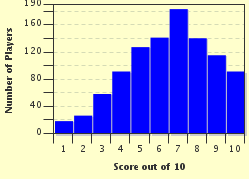Quiz Answer Key and Fun Facts
1. Which person was the first to publish and publicise his view that a single continent existed about 300 million years ago?
2. What was the name that the author of the plate tectonics theory gave to the super continent?
3. In which year was 'The Origin of Continents and Oceans' first published?
4. Soon after the original theory, evidence of sea floor spreading was found. In which ocean was the evidence for sea floor spreading FIRST found?
5. Tectonic plates have been divided by scientists into two different types - oceanic and continental. Which of these materials is typical of both types of plate?
6. There are two types of plate margins - constructive and destructive. As continental plates with constructive plate margins move apart, which landform is formed?
7. Destructive plate margins involve two plates moving towards each other. This can result in one of two outcomes. What is the name of the process in which the denser oceanic plate is forced under the lighter continental (or another oceanic) plate?
8. As well as constructive and destructive plate margins, there are also less common types. One of these is a conservative plate margin, which can lead to earthquakes. What movement occurs with conservative plate margins?
9. Hot spots can also cause volcanic activity. These develop because of a concentration of radioactive elements inside the mantle. Where do hotspots occur in a tectonic plate?
10. What is the name given to the notorious area around the Pacific plate associated with considerable tectonic activity?
Source: Author
mick_is_god
This quiz was reviewed by FunTrivia editor
crisw before going online.
Any errors found in FunTrivia content are routinely corrected through our feedback system.


